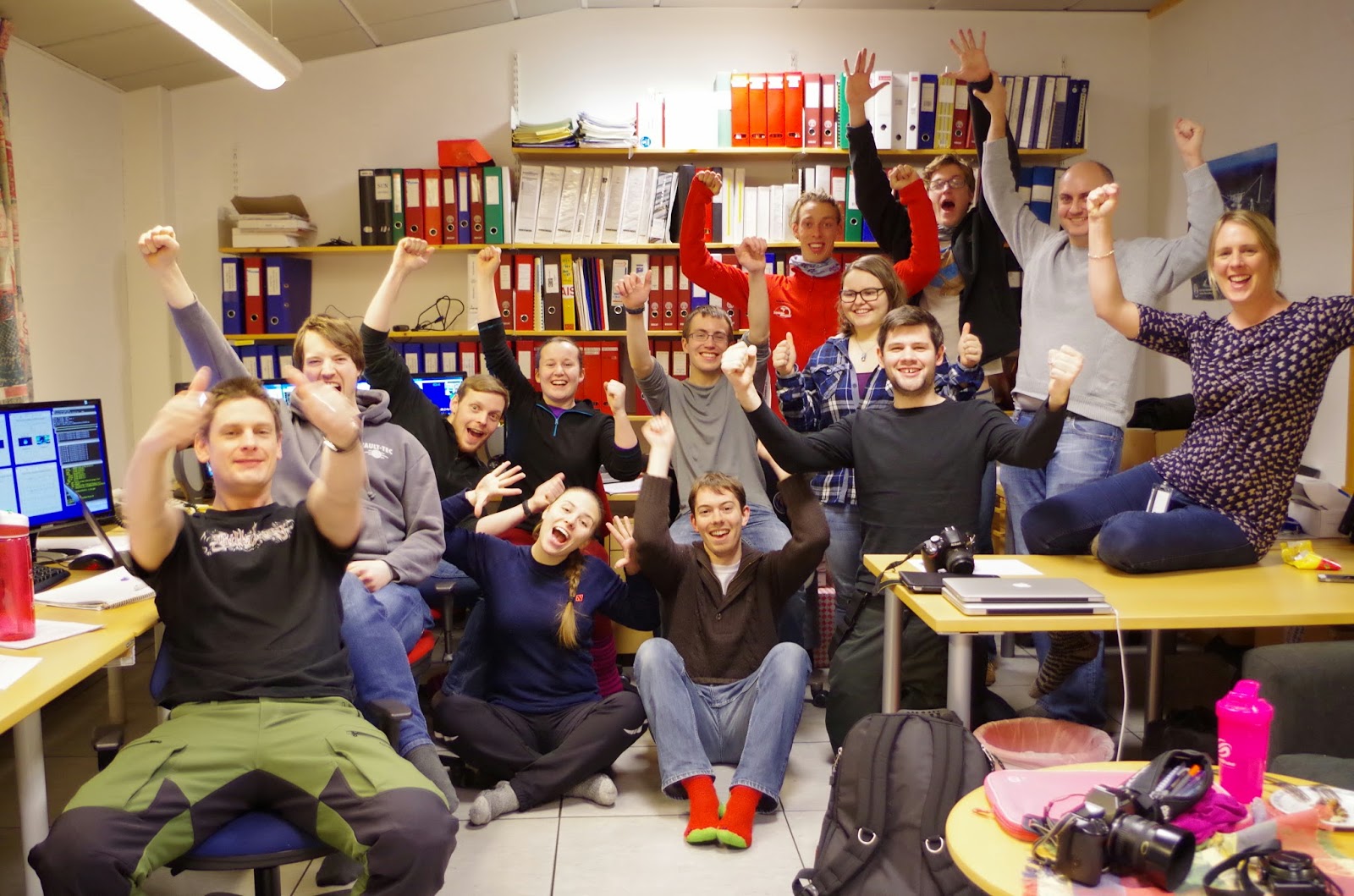This week, the Master and PhD students in Arctic Geophysics at the
University Centre on Svalbard (UNIS) are going up to the
Kjell Henriksen Observatory (KHO) every evening to do some field work. To get up to the observatory, we first need to drive to Mine 7 on Adventdalen and then have a ten-minute drive to KHO in a so-called bandwagon. Quite an experience...
 |
The bandwagon.
Photo: M. Grandin |
Many optical instruments make auroral observations at KHO and monitor the geomagnetic activity. First, there are several UNIS cameras to record the auroral emission above KHO, among which: a DSLR all-sky camera, taking colour images with a resolution ranging between 5–30 s, an all-sky video camera with 25 ms time resolution and a narrow-field monochromatic imager enabling to study fine structures within the auroral arc when it fills the field of view. Imagers owned by other institutes (University of Oslo, Finnish Meteorological Institute, University College London...) are also set up at KHO.
 |
The meridian scanning photometer at KHO (owned by UNIS).
Photo: M. Grandin |
The instrument on which we focus the most is the meridian scanning photometer (MSP). It measures the number of photons reaching the detector in order to provide the intensity of the auroral emission. Thanks to a rotating mirror, a scan of the sky along the geomagnetic north-south direction is made every 4 s. When an auroral arc is present, since it is generally oriented along the east-west direction, its elevation as seen from the observatory is recorded. By making a keogram out of the data, it is therefore possible to track the movement of the aurora across the sky. We made an absolute calibration of the MSP last night. This operation is generally performed about three times in the aurora season.
Tonight, we will do some bigger work: we need to make the absolute calibration of three spectrometers. We will mostly work outside, keeping two people to watch for polar bears and getting some others climb onto the roof of KHO. It should be quite chilly (around -30°C) but fortunately without too much wind...
 |
A photomultiplier similar to the one used by the meridian scanning photometer.
Photo: M. Grandin |
As a bonus, it turns out that we have been very lucky weather-wise, as we were granted clear skies for our first two nights onsite. Cherry on the top, we even got some aurora (i.e. good data to analyse later)! Although it was quite cold outside – around -25°C –, we of course found enough motivation to go out to take some pictures.
 |
Group picture under the aurora!
Photo: D. Billett |


















